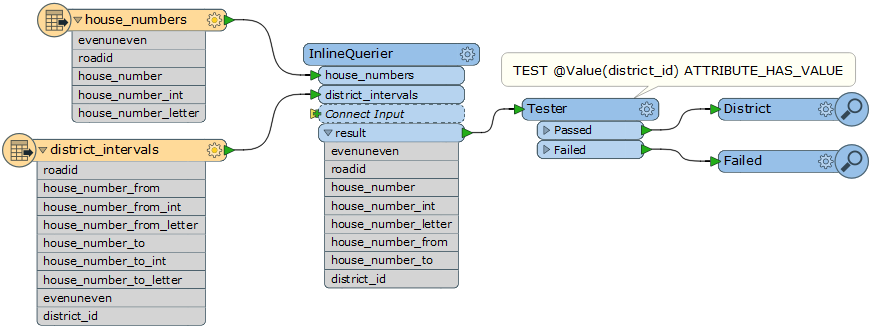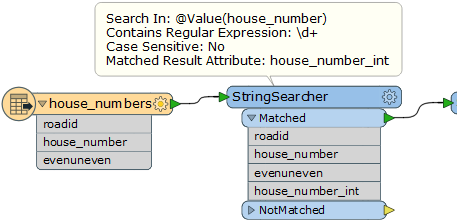Hi all
I have an interesting task of joining 2 datasets:
One dataset is a table with house numbers, the table has roadids, housenumbers (including letters) and an attribute that shows if the house number is an even number og uneven.
The second datasat contains roadids that matches the first dataset but instead of specific house numbers the second dataset contains 2 attributes: house_number_from and house_number_to, the second dataset also has an attribute telling if the intervals are even or uneven numbers.The second dataset also has a district_id attribute.
I have to join these datasets to get the district_id joined on the first dataset. I somehow have to determine if the adresses in the first datasets fall between the intervals in the second grouped by the roadid
I have attached both datasets here:
does anyone have an idae how to go about this?
Best answer by takashi
View original





